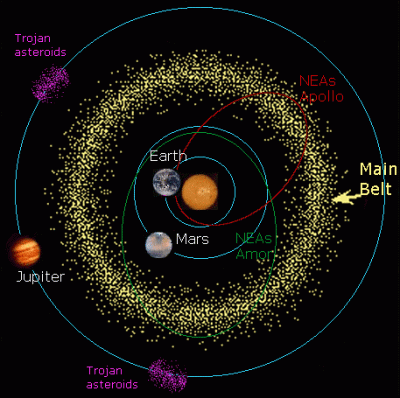HAS THERE EVER BEEN LIFE ON MARS?

Of all the planets in the Solar System, Mars most resembles Earth. Its day is only slightly over 24 hours, and it is tilted at the same angle as our planet, meaning that seasons are very similar to ours. Early on in its history, Mars had water on its surface. Oceans formed, kept warm by volcanic activity, and primitive life may have started here. Today, freezing conditions on Mars, and the planet’s thin atmosphere, mean that life can no longer exist on the planet’s surface.
The search for life on Mars shouldn’t focus exclusively on the distant past, some researchers say. Four billion years ago, the Martian surface was apparently quite habitable, featuring rivers, lakes and even a deep ocean. Indeed, some astrobiologists view ancient Mars as an even better cradle for life than Earth was, and they suspect that life on our planet may have come here long ago aboard Mars rocks blasted into space by a powerful impact.
Things changed when Mars lost its global magnetic field. Charged particles streaming from the sun were then free to strip away the once-thick Martian atmosphere, and strip it they did. This process had transformed Mars into the cold, dry world we know today by about 3.7 billion years ago, observations by NASA's MAVEN orbiter suggest. (Earth still has its global magnetic field, explaining how our planet remains so livable.)
One of the most promising hiding places is the Martian underground. Though the Red Planet's surface has no liquid water these days — apart, possibly, from temporary flows on warm slopes now and again — there’s a likely lot of the wet stuff in buried aquifers. For example, observations by Europe’s Mars Express orbiter suggest that a big lake may lurk beneath the Red Planet’s South Pole.
Earth’s diverse residents advertise their presence in dramatic and obvious ways; an advanced alien civilization could probably figure out pretty quickly, just by scanning our atmosphere, that our planet is inhabited.
We don’t see any such clear-cut evidence in the Martian air, but scientists have spotted some intriguing hints recently. For example, NASA's Curiosity rover has rolled through two plumes of methane inside the 96-mile-wide (154 kilometers) Gale Crater, which the six-wheeled robot has been exploring since its 2012 touchdown. The rover mission also determined that baseline methane concentrations in Gale's air go through cycles seasonally.
More than 90% of Earth's atmospheric methane is produced by microbes and other organisms, so it's possible the gas is a signature of modern Martian life.
But the jury is most definitely still out on that. Abiotic processes can generate methane, too; the reaction of hot water with certain types of rock is one example. And even if the Mars methane is biogenic, the creatures that created it could be long dead. Scientists think the Red Planet methane plumes leaked out from underground, and there's no telling how long the gas lay trapped down there before making its way to the surface.



 Our solar system formed from the force of an exploding star. When some stars reach the end of their lives, they can explode into a supernova, sending shockwaves of energy deep into space. Roughly 4.5 billion years ago, a shock-wave from a supernova, travelling at 30 million kilometres (19 million miles) per hour, hit a cloud of ice, dust and gas. The force of the impact caused the cloud to flatten and rotate. From this spinning disc, our Solar System began to form.
Our solar system formed from the force of an exploding star. When some stars reach the end of their lives, they can explode into a supernova, sending shockwaves of energy deep into space. Roughly 4.5 billion years ago, a shock-wave from a supernova, travelling at 30 million kilometres (19 million miles) per hour, hit a cloud of ice, dust and gas. The force of the impact caused the cloud to flatten and rotate. From this spinning disc, our Solar System began to form.

 An object’s ORBIT is the path it takes around another, more massive object in space. Each of the nine planets in the Solar System is held in orbit by the Sun’s gravitational pull. However, the planets do not orbit the Sun in circular paths but in elliptical (oval) ones. Orbit lengths, and the orbital period (the time it takes a planet to complete one orbit) increase with successively distant planets.
An object’s ORBIT is the path it takes around another, more massive object in space. Each of the nine planets in the Solar System is held in orbit by the Sun’s gravitational pull. However, the planets do not orbit the Sun in circular paths but in elliptical (oval) ones. Orbit lengths, and the orbital period (the time it takes a planet to complete one orbit) increase with successively distant planets.





